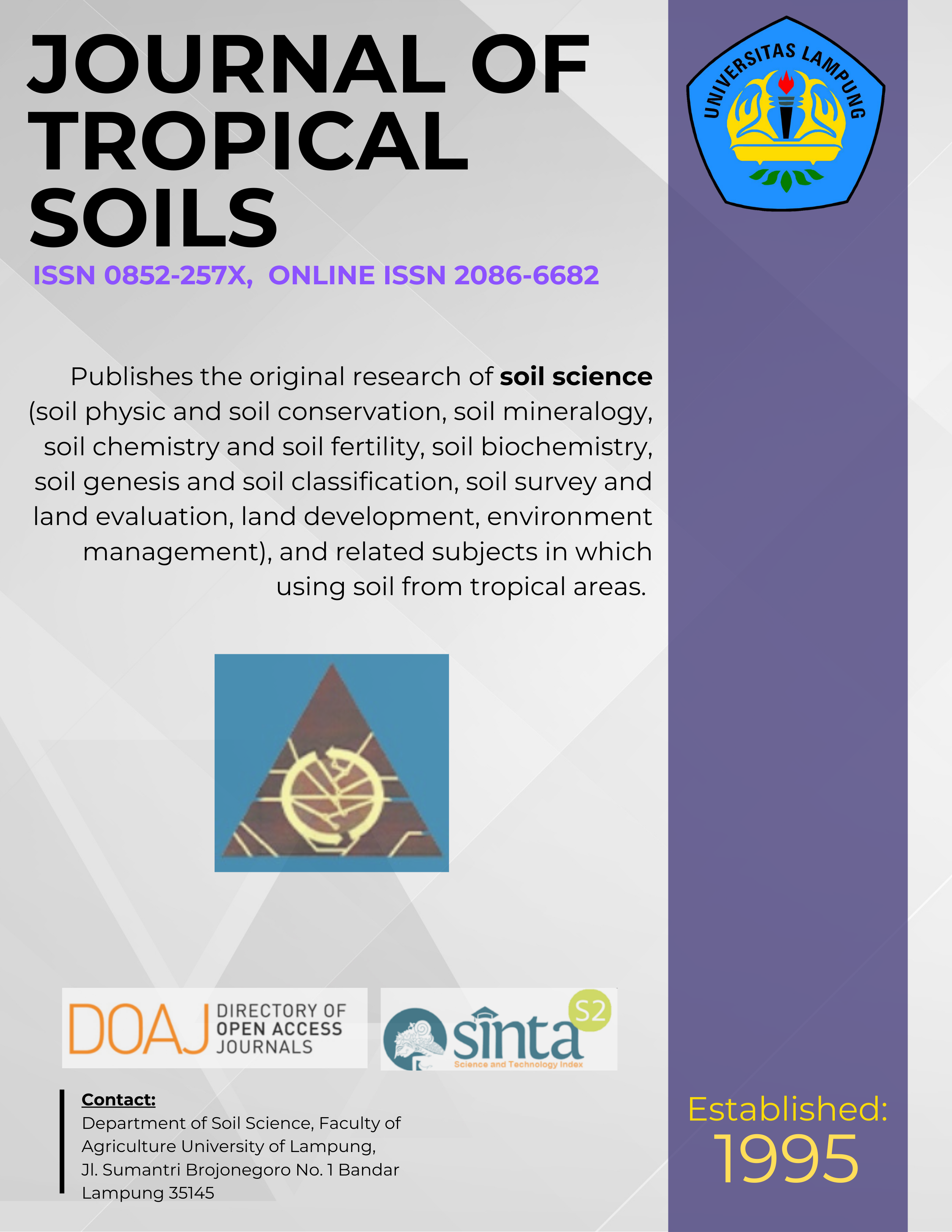Evaluation of Primary Macro Nutrients on Arboretum Area in Lampung University Campus, Gedong Meneng
Main Article Content
Abstract
Vegetation has a strong influence on soil characteristics. Vegetation can contribute organic matter sand nutrients to the soil. This study aimed to assess soil fertility through various approaches physical and chemical soil on various types of cover crop in the arboretum area at University of Lampung, and determined the type of cover crop that had the best effect on soil fertility. The research was be conducted by a survey method, which made observations on the soil characteristics of six species of cover crops following were rosewood (Dalbergia latifolia), teak (Tectona grandis), albizia (Paraserianthes Albiziaria), acacia (Acasia mangium), fern tree (Filicium desipiens), and mahogany (Swietenia macrophylla King). Soil characteristics observed data were the physical and chemical properties, obtained by field observations, through boring profiles and soil sampling. The results showed that soil fertility on rosewood, albizia, acacia and mahogany on campus area of Lampung University had contents of soil organic C, organic matter, and soil total N higher than teak and Fern tree. Litter from Rosewood, Albizia, and acacia had the best effect on soil fertility, so they could be the best covered vegetation to improve soil characteristics related to optimal and sustainable of land management.
Keyword : Acacia, albizia, arboretum, cover crop, fern tree, litter, macronutrient, mahogany, rosewood, teak, and vegetation.
[How to Cite: Nur AA and T Syam. 2014. Evaluation of Primary Macro Nutrients on Arboretum Area in Lampung University Campus, Gedong Meneng. J Trop Soils 19(2): 101-107. Doi: 10.5400/jts.2014.19.2.101]
Â
Â
Downloads
Article Details
Issue
Section
License for Authors
Authors who publish with this journal agree to the following terms:
- Authors retain copyright and grant the journal right of first publication with the work simultaneously licensed under a Creative Commons Attribution License that allows others to share the work with an acknowledgement of the work's authorship and initial publication in this journal.
- Authors are able to enter into separate, additional contractual arrangements for the non-exclusive distribution of the journal's published version of the work (e.g., post it to an institutional repository or publish it in a book), with an acknowledgement of its initial publication in this journal.
- Authors are permitted and encouraged to post their work online (e.g., in institutional repositories or on their website) prior to and during the submission process, as it can lead to productive exchanges, as well as earlier and greater citation of published work (See The Effect of Open Access).
License for Regular Users
Other regular users who want to cite, distribute, remix, tweak, and build upon author’s works, even for commercial purposes, should acknowledge the work’s authorship and initial publication in this journal, licensed under a Creative Commons Attribution License.

